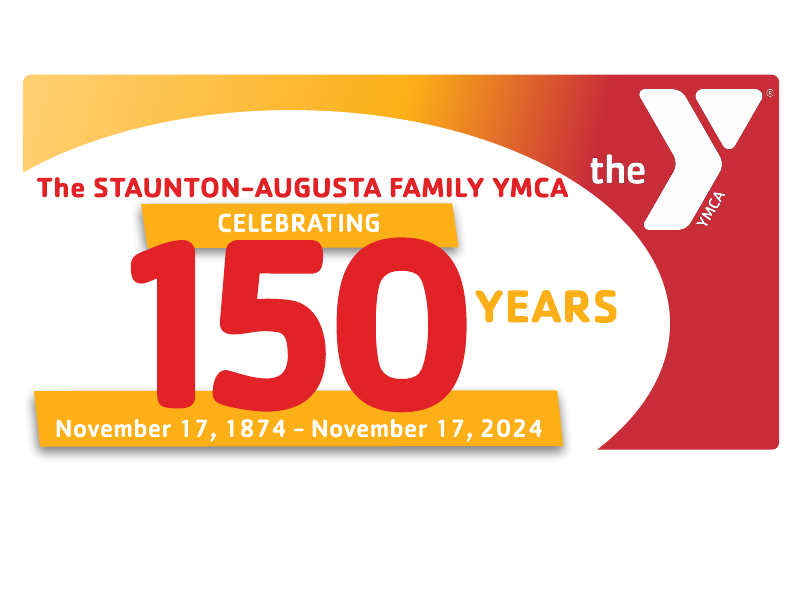Excerpts of the following article were published in the October newsletter. The full text of Group Fitness Instructors’ responses is included here.
Group Fitness Classes Target Joint Health, Mobility
Group Fitness Instructor Peggy Smith has years of experience to back up her observation that, “physical activity is not only safe, but it can reduce pain and stiffness while improving overall health, mood, and quality of life.” She knows this especially holds true for people with arthritis and related conditions.
As the nation’s No. 1 cause of disability, arthritis affects nearly 50 million adults and 300,000 children. Through classes, aquatic spaces, specialized equipment, and access to trained professionals, the STAUNTON-AUGUSTA FAMILY YMCA – like YMCAs around the country – offers hope.
In anticipation of World Arthritis Day, celebrated annually on October 12, we asked Smith and her fellow Group Fitness Instructors Billie Rosenberger, Marsha Pillet, and Carol Byrd to elaborate on how their classes serve the SAYMCA community during weekly sessions and beyond.
How do your classes fit into the fabric of the SAYMCA?
Billie: I teach Gentle Flow Yoga and PACE (People with Arthritis Can Exercise), which serve the senior population of our YMCA.
Peggy: My Gentle AquaFit and PACE classes meet the needs of the different populations that are members of the Y.
Marsha: Chair Yoga and Adaptive Yoga both have a lot to offer those looking for arthritis care. They are wonderful compliments to gently warm and relax muscles that have become tight in response to joint pain and to release tension from daily stresses. This can be an alternative or addition to a weekly [routine].
Carol: Right now, I’m just leading Gentle AquaFit, and I sometimes fill in for PACE. People in these classes are generally dealing with multiple pain and/or joint issues, and I always reassure them that anything they can do will benefit them.
Why is it important for the Y to offer classes that focus on arthritis care and coping?
Billie: It is very important to move the body every day and to have a social environment for those who live alone. Yoga, in particular, [provides a critical] place to slow down and be quiet in our too loud and too fast world.
Peggy: Being active helps you perform everyday tasks and maintain your independence which is what I see as the number one reason people come to the Y. Water is a safe environment to help relieve arthritis pain and stiffness and just stepping in the water and slowly walking can help you feel the stress leave your body.
Marsha: It’s so important to offer the range of classes to suit the broad range of ages, bodies and conditions that come to the Y, [which allows] our Y be a reflection of our community
Carol: Typically, my students live by themselves, and motivation to get moving is key. Our goal is to provide a comfortable environment where they can relate to the others in the class and feel like they are accomplishing something for their health.
What does the word “family” mean to your group?
Peggy: Family means we all have the same basic goal and we care and support each in our exercise journey. People with arthritis are at a high risk of anxiety and depression. This is where I see one of the biggest benefits of the class: the fellowship and support participants give to one another.
Marsha: Class members quickly assimilate new [participants], making the group its own caring community welcoming new members. We let them know that they are in good company with many regulars in the class. Members often come with a friend and invite visiting family to sit in and share the class.
Carol: I posed this question to the water class, and, without hesitation, one person piped up and said, “we’re dysfunctional!” So, yes, we are lighthearted and like to have fun – what it truly shows is that they are comfortable with each other. We go out to lunch regularly, share prayer requests, talk about what is going on in the world and our lives, and all of that really leads to a strong bond.
How do you hope participants feel after your class?
Billie: I hope that they feel like they have had a good workout and are refreshed to continue their day. I also strive to help them feel supported – attendees are always welcoming and caring and I am always willing to answer any questions they have.
Marsha: At the end of every class, the calm and sense of relaxation is palpable. When a class ends that way, I feel I’ve led a good class; I thank them for coming to class and for what they bring to the group.
Carol: I hope they feel refreshed and more confident to be able to handle whatever they face when they head out those doors .I do hope that the laughter and the exercise has allowed them to release some of the stress and tension and given them energy to deal with what can sometimes be quite heavy situations in their lives.
What else would you like people to know about the Y’s adaptive classes and instructors?
Billie: I hope that the Y will continue to have a lot for seniors as that population increases, as they offer a great opportunity for exercise and socializing.
Peggy: Being an Aquatics Personal Trainer and Neuro Wellness Trainer has helped me a lot in learning more about arthritis and how to coach people with related conditions.
Marsha: Chair Yoga and Adapted Yoga are practices to gently and safely work with sometimes very fragile and recovering bodies.


